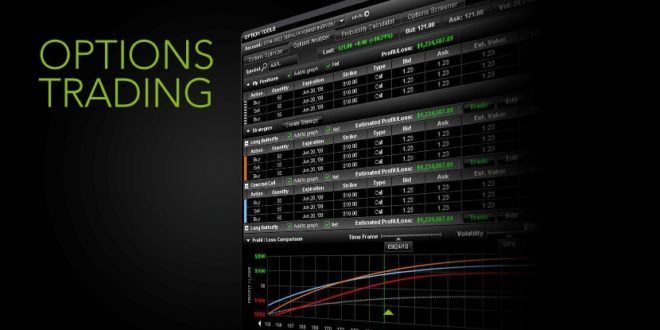Investors should carefully consider these risks and understand how they align with their own risk tolerance and investment goals before deciding to invest in the SBI Dividend Yield Fund. Consulting with a financial advisor can provide personalized insights into the fund’s suitability within an investor’s overall portfolio.

Investment Objective and Strategy:
The investment objective of the SBI Dividend Yield Fund is to provide investors with long-term capital appreciation and regular dividend income by primarily investing in dividend-yielding stocks. The fund aims to identify companies with a history of paying dividends and those with the potential to maintain or increase dividend payments in the future.
Key Points:
- Dividend-Oriented Approach: The fund follows a dividend yield strategy, focusing on companies that distribute a significant portion of their earnings as dividends.
- Quality and Stability: The fund manager may seek companies with stable financials, strong cash flows, and sustainable dividend payout ratios.
- Diversification: The fund aims to diversify its holdings across various sectors and industries to reduce concentration risk.
- Equity-Focused: As an equity mutual fund, the SBI Dividend Yield Fund primarily invests in equity and equity-related instruments.
Historical Performance Analysis:
Historical performance analysis involves evaluating the fund’s returns over different time periods to understand its track record.
Key Points:
- Return Comparison: Assess the fund’s historical returns over one year, three years, five years, and since inception. Compare these returns with its benchmark and peer funds within the same category.
- Risk-Adjusted Measures: Evaluate risk-adjusted measures such as the Sharpe ratio or Sortino ratio to understand the fund’s risk-adjusted performance relative to its peers.
- Volatility: Consider the fund’s volatility over time. Lower volatility may indicate a more stable investment experience.
- Consistency: Analyze the fund’s consistency in performance across different market cycles.
Risk Analysis:
A thorough risk analysis helps investors understand the potential risks associated with investing in the SBI Dividend Yield Fund.
Key Points:
- Market Risk: The fund is exposed to market fluctuations, which can impact the value of its investments.
- Dividend Risk: Companies may reduce or skip dividend payments, affecting the fund’s dividend income.
- Sector Concentration Risk: If the fund is heavily concentrated in specific sectors, poor performance in those sectors can adversely affect the fund’s returns.
- Interest Rate Risk: If the fund holds debt securities, changes in interest rates can impact the performance of fixed-income holdings.
- Credit Risk: The fund may be exposed to credit risk if it invests in lower-rated or unrated debt securities.
- Managerial Risk: The fund’s performance is influenced by the skill and decisions of the fund manager.
Portfolio Composition and Diversification:
The portfolio composition and diversification of the SBI Dividend Yield Fund provide insights into the types of assets the fund manager has invested in and the level of diversification.
Key Points:
- Sector Allocation: Identify the sectors in which the fund has allocated its assets. Common sectors may include financials, technology, healthcare, consumer goods, energy, etc.
- Top Holdings: Review the fund’s top holdings, which are the largest individual positions in the portfolio. Understand the weightage of each holding to the fund’s overall performance.
- Industry Exposure: Analyze the fund’s exposure to various industries within each sector. Different industries within a sector may have varying growth prospects and risk profiles.
- Diversification: Assess the level of diversification in the fund’s holdings. A well-diversified portfolio spreads risk across multiple companies and sectors, reducing reliance on any single stock’s performance.
Expense Ratio and Fees:
The expense ratio and fees associated with the SBI Dividend Yield Fund can impact an investor’s overall returns.
Key Points:
- Expense Ratio: The expense ratio represents the percentage of the fund’s assets used to cover management, administrative, and other operating expenses. Lower expense ratios generally result in higher net returns for investors.
- Exit Load: Check if the fund imposes an exit load, which is a fee charged when investors redeem their investments before a specific holding period. An exit load can affect the liquidity of the investment.
- Direct vs. Regular Plan: The fund may offer both direct and regular plans. Direct plans have lower expense ratios as they do not include distributor commissions. Investors can choose the plan that suits their investment approach.
Dividend Payout and Frequency:
Understanding the fund’s dividend payout and frequency helps investors assess the regular income potential of the SBI Dividend Yield Fund.
Key Points:
- Dividend Payout Frequency: The fund may offer dividends on a quarterly, half-yearly, or annual basis. Check the historical dividend payout frequency of the fund.
- Dividend Reinvestment Option: Some funds offer a dividend reinvestment option where dividends are automatically reinvested to purchase additional units of the fund.
- Dividend Distribution Policy: Review the fund’s dividend distribution policy to understand how the fund manager decides on the dividend payout.
Investors should carefully review the portfolio composition, expense ratio, dividend payout, and frequency to assess whether the SBI Dividend Yield Fund aligns with their investment objectives and risk tolerance. Additionally, considering the dividend payout frequency and the option for dividend reinvestment can help investors plan their cash flow and long-term income needs. As always, consulting with a financial advisor can provide personalized guidance based on individual financial circumstances and goals.
FAQs (Frequently Asked Questions) about the SBI Dividend Yield Fund:
- What is the primary investment objective of the SBI Dividend Yield Fund? The fund aims to provide long-term capital appreciation and regular dividend income by investing in dividend-yielding stocks.
- What is the dividend yield strategy followed by the fund? The fund follows a dividend yield strategy, focusing on companies with a history of paying dividends and potential for future dividend payments.
- How does the fund manage risk associated with investing in dividend-paying stocks? The fund aims to diversify across sectors and industries to reduce concentration risk and may focus on companies with stable financials for more stable dividend payments.
- What has been the historical performance of the SBI Dividend Yield Fund? Historical performance can vary over time. Investors should review the fund’s returns over different time frames and compare them with relevant benchmarks and peers.
- What are the key risks associated with investing in the fund? Risks include market risk, dividend risk, sector concentration risk, interest rate risk, credit risk, and managerial risk. Investors should understand these risks before investing.
Conclusion:
The SBI Dividend Yield Fund is a mutual fund that follows a dividend yield strategy, investing in dividend-paying stocks to provide long-term capital appreciation and regular dividend income to investors. Like any investment, the fund comes with certain risks, including market volatility and dividend uncertainties.
Also Read:
- Fixed Deposits vs Money Market Funds ; Which One is Right for You?
- International Mutual Funds in India- Should you Invest?
- Should you Invest in retirement savings fund?
- Potential Risk Matrix in Debt Mutual funds- How to Interpret?

Hello, I am Tanisha Kriplani, graduated in computer science from Delhi University. I am passionate about web content writing and have a strong interest in Data Analytics and Data Engineering.












